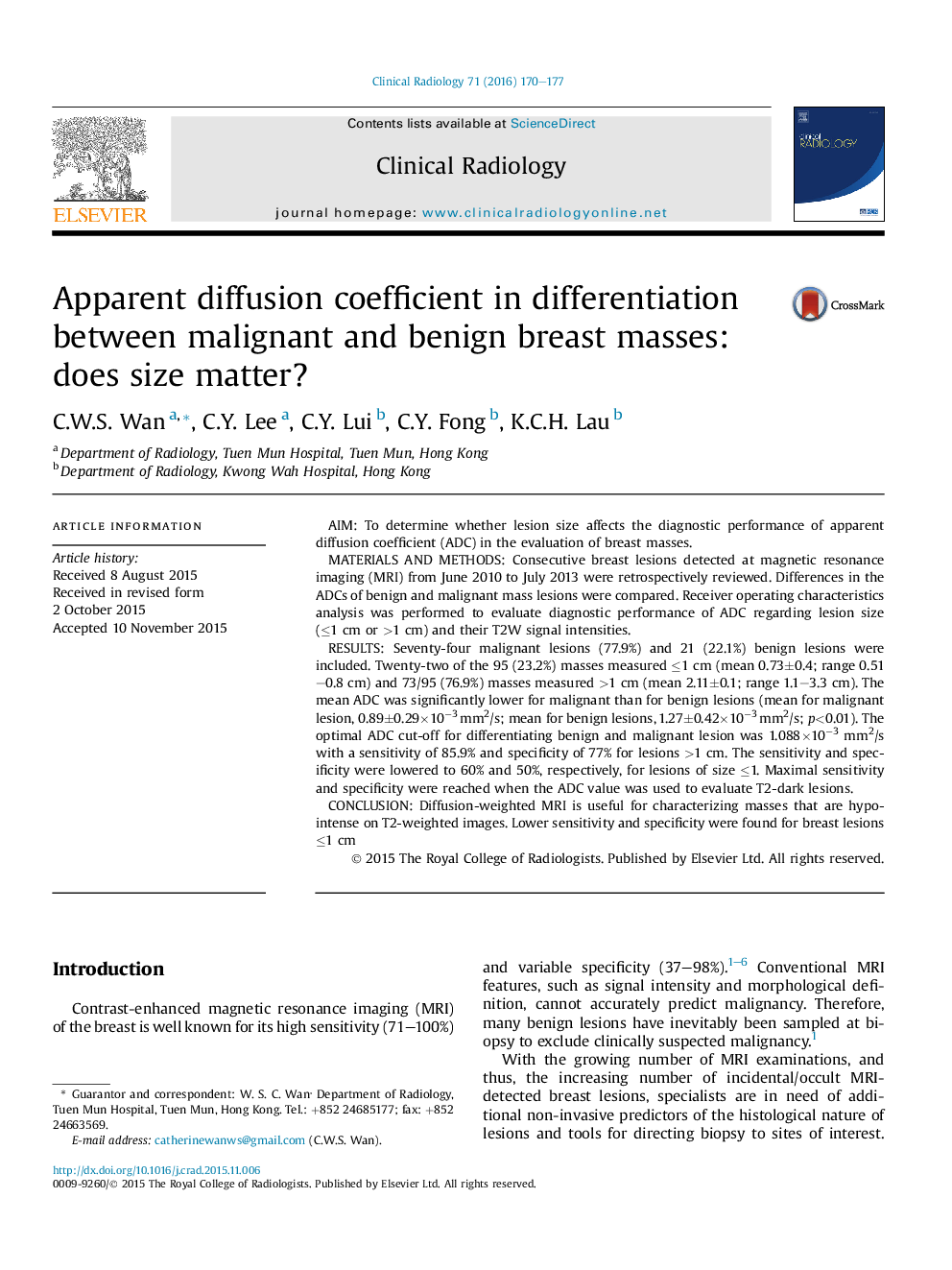| Article ID | Journal | Published Year | Pages | File Type |
|---|---|---|---|---|
| 3981420 | Clinical Radiology | 2016 | 8 Pages |
•Malignant breast masses demonstrated significant lower ADC values than benign masses.•The optimal ADC cutoff for differentiating benign and malignant breast lesions was 1.088 × 10−3 mm2/s. For lesions >1cm, it gave rise to a sensitivity of 85.9% and specificity of 77%, which fell to 60% and 50% respectively for analyzing lesions with size ≤ 1cm.•DWI was most useful for characterizing T2W hypointense masses, which contributed the majority of the malignant breast masses.
AimTo determine whether lesion size affects the diagnostic performance of apparent diffusion coefficient (ADC) in the evaluation of breast masses.Materials and methodsConsecutive breast lesions detected at magnetic resonance imaging (MRI) from June 2010 to July 2013 were retrospectively reviewed. Differences in the ADCs of benign and malignant mass lesions were compared. Receiver operating characteristics analysis was performed to evaluate diagnostic performance of ADC regarding lesion size (≤1 cm or >1 cm) and their T2W signal intensities.ResultsSeventy-four malignant lesions (77.9%) and 21 (22.1%) benign lesions were included. Twenty-two of the 95 (23.2%) masses measured ≤1 cm (mean 0.73±0.4; range 0.51–0.8 cm) and 73/95 (76.9%) masses measured >1 cm (mean 2.11±0.1; range 1.1–3.3 cm). The mean ADC was significantly lower for malignant than for benign lesions (mean for malignant lesion, 0.89±0.29×10−3 mm2/s; mean for benign lesions, 1.27±0.42×10−3 mm2/s; p<0.01). The optimal ADC cut-off for differentiating benign and malignant lesion was 1.088×10−3 mm2/s with a sensitivity of 85.9% and specificity of 77% for lesions >1 cm. The sensitivity and specificity were lowered to 60% and 50%, respectively, for lesions of size ≤1. Maximal sensitivity and specificity were reached when the ADC value was used to evaluate T2-dark lesions.ConclusionDiffusion-weighted MRI is useful for characterizing masses that are hypointense on T2-weighted images. Lower sensitivity and specificity were found for breast lesions ≤1 cm
